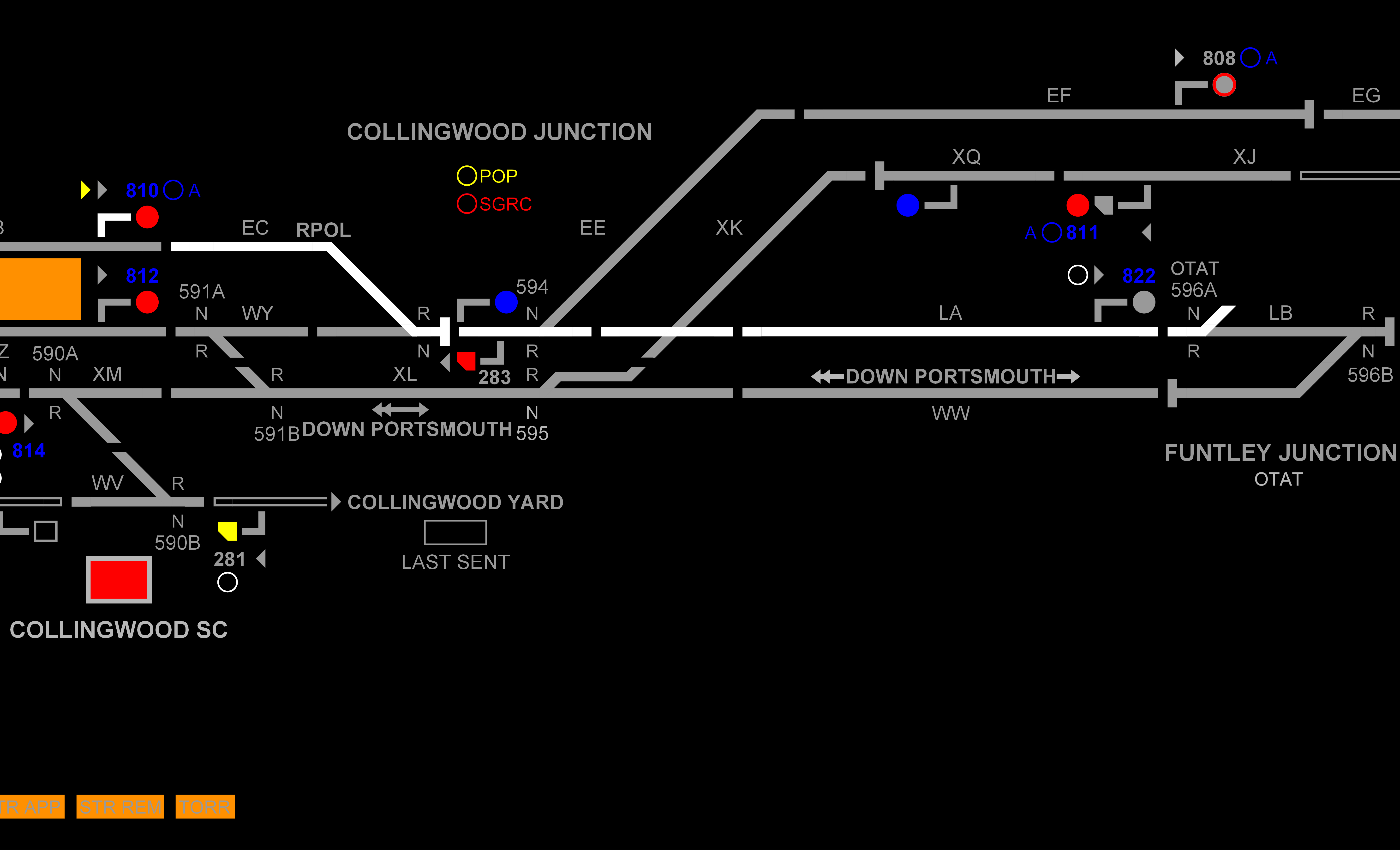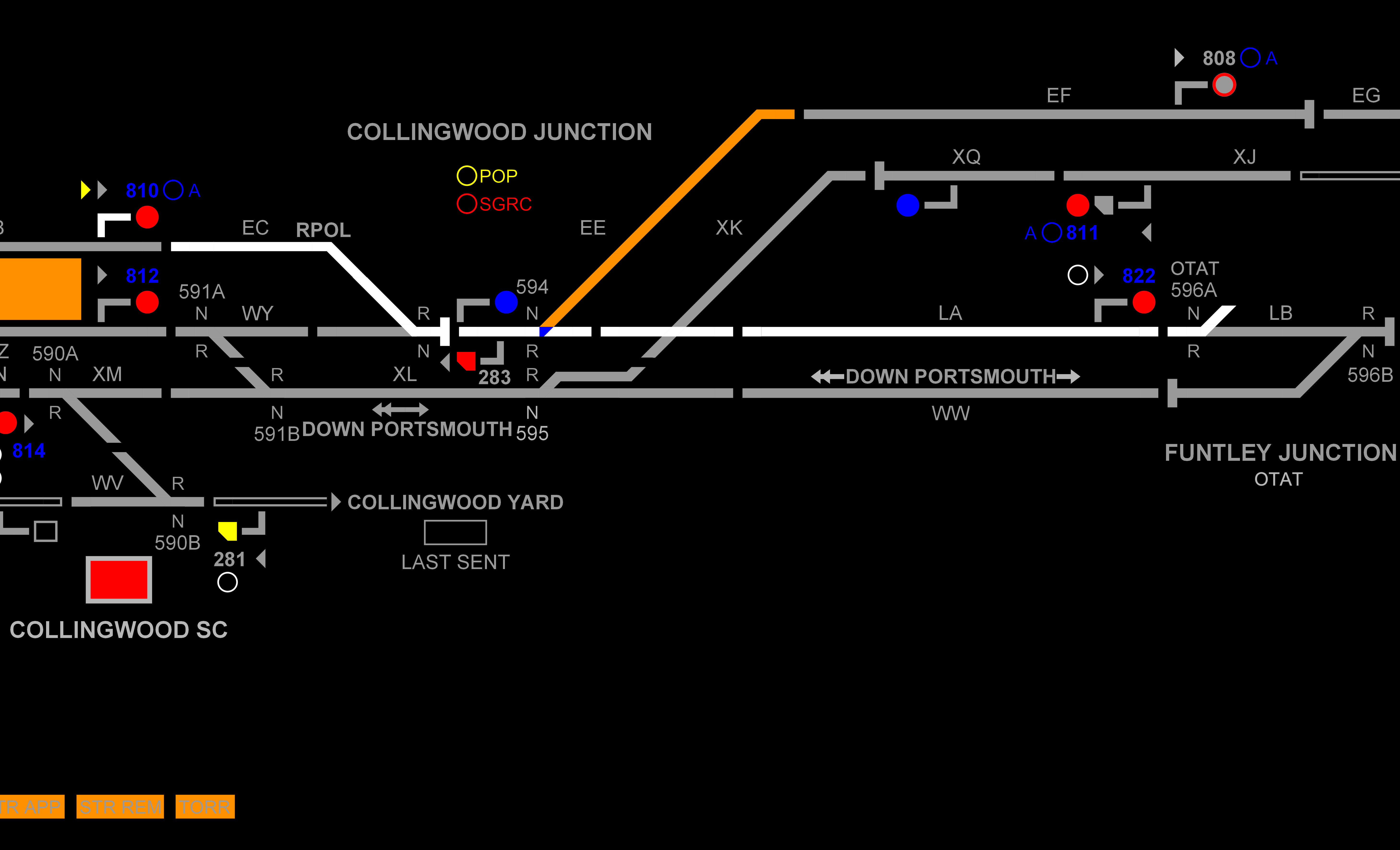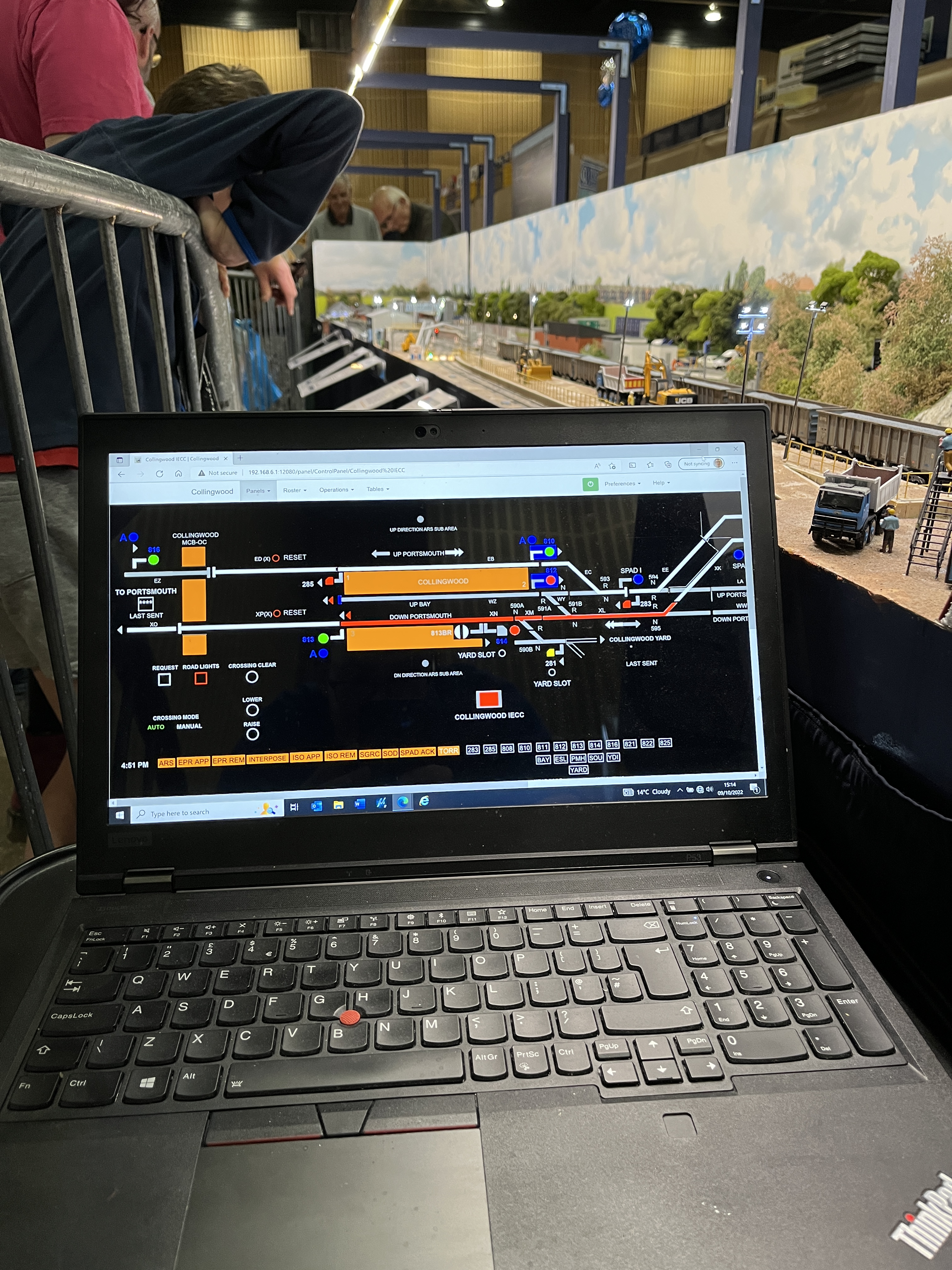The Aspect controls within an interlocking probably carries out the most individual checks and functions within any of the interlocking sub processes, however, they are all fairly basic.
Aspect controls perform two roles, the first is to make sure that it is safe for a signal to show a proceed aspect, and the second is to ensure that the signal displays the correct aspect in comparison with the signal ahead.
The first function carries out a series of checks before allowing the signal to show a proceed aspect.
Assuming that a route is set, the aspect controls first check that the sectional route locking has been successfully applied along the entire route, ensuring that the train is protected before allowing it into the route.

The interlocking will then check the exit signal is showing an aspect, if it isn’t, then the entrance signal will not pull ‘OFF’.

If the exit signal is lit, the aspect controls check that either the exit signal is ‘OFF’ or that its TPWS equipment, if fitted, is transmitting. The idea behind this is that if the exit signal is ‘ON’, and then subsequently the lamp goes out after a train has passed the entrance signal, the TPWS will be capable of stopping the train (assuming the TPWS equipment on the train is working correctly). It must be remembered that the trackside TPWS equipment is not in itself fail safe (i.e. it won’t work correctly if there is no power), so it must be proven that it is working before a train can be allowed to approach it.
The next check is to ensure that the points have reached the position that they were asked to be in. If the points aren’t detected in the position that they are required to be in, then the signal won’t pull ‘OFF’.

The final check for non-junction signals that the interlocking performs before showing a proceed aspect is that the route is clear of trains, by checking the occupancy of the track circuits. Once all track circuits, the signal can show a proceed aspect (apart from if it has a form of approach control, which will be explained in a moment). In most cases, if any of these track circuits subsequently goes occupied, then the signal will go back to danger. However, there are situations where this is not the case.
These are situations are in the case of ‘Last Wheel Replacement’ and ‘Delayed Replacement’:
Last Wheel Replacement – This is where the signal doesn’t go back to danger until the entire train has passed the signal. This is used mostly on shunt signals (but can be used on Main Aspect Signals) where a train has to propel past the signal, as if the normal ‘First Wheel replacement’ is used, the driver would see the signal go back to danger in front of them, something they don’t take too kindly to! This control is provided by preventing the signal returning to danger until the berth track circuit is unoccupied.
Delayed Replacement – This is very similar to Last Wheel Replacement, but the signal returns to danger when a train reaches a certain point in the route (usually the 2nd or 3rd track circuit) rather than once the whole train has passed the signal. This is usually used where a TPWS TSS loop is too close to the normal replacement joint, which would cause a train going past the signal to ‘trip’ itself. It is also used where a train has to stop beyond a platform starting signal to ensure the correct portion of the train is on the platform. The delayed replacement is used to allow the guard / platform staff to see the platform starter is ‘OFF’ despite the front of the train being ahead of it.



There is one more check that must be made for a signal which has route indicators, it must be ensured that the junction indicator has been lit correctly and that enough of it is visible to the driver so that the indication is clear and legible.
On Relay interlockings, this final check is barely noticeable due to the speed of the relays, however on a CBI, the processing speed means that the route indication can be lit for several seconds before the signal changes pulls ‘OFF’. On Collingwood, this proving is simulated by delaying the clearing of the aspect.
The aspect controls second role is to ensure the correct aspect sequence is displayed. This is all nice and simple, so if you want a detailed explanation about aspect sequences, please read ‘Colour Light Signalling for Model Railways’, but the controls in the interlocking are outlined here.
On Collingwood, it is only CD810, CD811, CD812 and CD821 which require aspect sequence controls, as these are three aspect signals. The controls for these are very simple, once the interlocking has determined the signal can clear, it then checks whether the signal ahead is ‘OFF’. If it is, then the signal can clear up to a green aspect, but if the exit signal is ‘ON’, then the signal will only clear to a single yellow.
Once the signal has returned to danger, the aspect controls then apply the ‘stick’ function. This is where the signal is prevented from clearing to a proceed aspect again once a train has passed through the route. The function is applied once both the berth ad first track circuit are occupied, however, it can be overridden if an Automatic Working facility is provided.
Until the stick function is applied, the route can’t be released…

